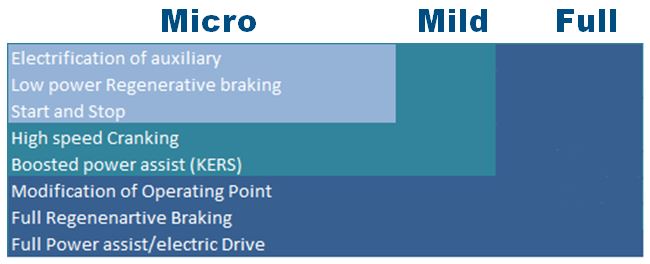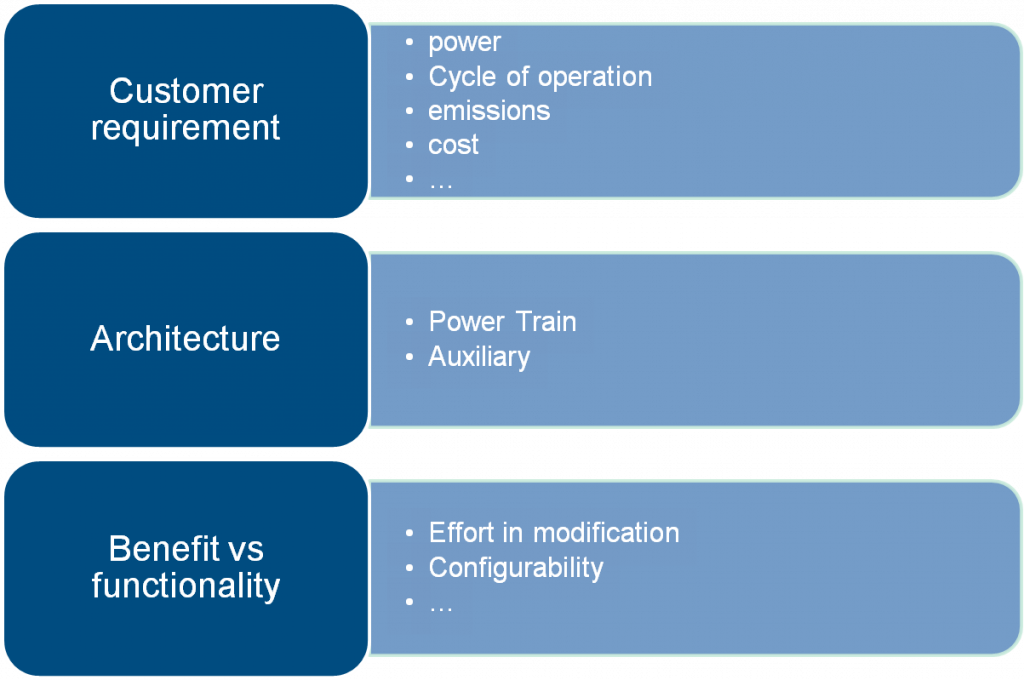An Approach for Vehicle Electrification
By Prof. Giambattista Gruosso
Is vehicle electrification an urgent need or just a passing fad? There is a lot of discussion about the evolution of electric vehicles and what their impact will be. The impact is not measured solely on the grounds of the vehicle manufacturers, but also where the energy comes from and how it will be used, and finally whether they will address all the real needs of users and become commercially accepted.
There are many arguments that classify vehicle electrification as an urgent need: the main ones are linked to the reduction of pollutants, the development of new intelligent transport systems, the lack of availability for finite fossil fuels in the near future.
Pollution and traffic have shaken up the way we think about mobility in most cities in the world. These two subjects have become foremost in convincing international, national and urban governments to define new strategies to reduce emissions and to improve urban environmental conditions. The urban politics must be supported by the development and improvement of public transportation. Here the necessity to realize vehicles able to provide a reduction or eliminate pollutant emissions: all-electric and hybrid technologies applied to urban buses are actually seen as the best solutions to these problems.
On the other hand the electrification can help to improve performance, can help to create new consumer habits and could allow the development of new tools for work and for leisure. Vehicle electrification may also allow the development of new services unimagined in the traditional automotive markets that could increase the value chain.
From this point of view, the vehicle electrification can be considered a fad.
Fads and needs are two faces of the same medal: to find a way to push the technology to the consumer in order to drive market growth of these kinds of vehicles while avoiding getting mired in the mud.
At the same time, electrification is not just related to the powertrain, but is also linked to auxiliary devices: a role, particularly appealing in this field, is carried out from the Power Take Off (PTO) and from electrical systems for the “range extension”.
All these aspects contribute to new issues that must be addressed: their solution is closely related to the way of perceiving these vehicles from the market. First of all the need of energy sources availability (connection points to the distribution grid) or the need of onboard auxiliary energy sources (PTO and Range Extenders).
The market is one of the key points of the electrification process. Customer habits are the starting point for the planning of new vehicles or new electrical add-on. Without a proper analysis of these, it is difficult to imagine the future market for electric transportation systems.
The approach presented in this paper starts from these considerations and shows the potential of an integrated framework for the modeling and the design of an electrification project. Electrification that does not put the powertrain in the center of gravity, but starts from the point of view of customers to define items for the market.
The benefits of simulation, in this context, are many. First and foremost, the reduction of time needed to develop a new archetype, from customer requests. It is possible to simulate the control code of the individual devices and validate it with the entire vehicle, allowing so “Model Based design” approach for the development of new features, integrated perfectly into the logic of the vehicle.
To do this you must locate classification methodologies that help to separate the decisions of interest from the other that are only accessory.
Classification proposal
While the Electrical Vehicle is easy to classify, the hybrid vehicle definition is so abstract and general that can considered the possibility to use new futuristic kind of power sources. A hybrid electric vehicle (HEV) is a vehicle in which propulsion energy is available from two or more kinds or types of energy stores, sources, or converters and at least one of them can deliver electrical energy. The current classification, made by powertrain, is the follow:
• series hybrid;
• parallel hybrid.
The growing interest in this technology brought to the definition of two more configurations:
• series-parallel hybrid;
• complex hybrid.
These two configurations are an evolution of the basic series and parallel hybrid. Series-parallel hybrid system incorporates the feature of both series and parallel HEVs, but involving an additional mechanical link compared with the series hybrid and also an additional generator compared with the parallel hybrid. Complex hybrid system involves a complex configuration that cannot be classified into the above three kinds. The complex hybrid seems to be similar to the series-parallel hybrid, since the generator and electric motor are both electric machinery.
This however these are not the only possible classifications. There are at least two more that can help to define the degree of electrification. The first of these defines electrification from the resources involved as shown in figure 1 and 2.

Figure 1: Schematization of the degree of electrification in vehicles

Figure 2: example of classification of the electrification by means of the functions.
The other classification is related to the potential involved, e.g.:
• Increase in driving dynamics and performances
• Fuel efficiency combined with reduced CO2 emissions
• Off-board-supply of electrical devices
• Support of vehicle stability control systems
• …
Simulation models for enhancing potential
The process of decision and choice sees the integration of different requirements, each of them needs to be analyzed explicitly and effectively (see figure 3).

Figure 3: Example of decisional process
The starting point of this process can pass through the implementation of a model of the whole vehicle in order to test the performance of new technological concept related with several traction systems, including auxiliary, using which it could be possible to attend different kind of missions in an urban and extra-urban environment.
Using the simulation model, several analyses will be carried out in order to choose the best solution as far as the control logics of the vehicle are concerned.
It is possible to synthesize three main goals for this approach:
1) Study of a new drive cycle, not yet performed, by which it will be possible to correctly test the vehicle performances.
2) The second phase of this approach is the study of the dynamics and performances of the vehicle, using the chosen drive cycle. In this phase different solutions for the vehicle will be compared in order to reduce pollution and fuel consumption to the minimum and to achieve the best performance on road
3) The final phase of point is the definition of the correct control logic for the vehicle.
In this context the simulation role is very clear. It allows an early prediction of the dynamic behavior combined with a large modeling know-how for specific fields of application.
At the same time it decreases the needs of physical prototypes and shortens the overall development time, including the feedback of the consumer.
Another point of force of this methodology is the capability of validate and test function by means of CiL (Component in the Loop) and HiL (hardware in the loop) simulations.
At same time the requirements of the simulation process are:
• it will be fully configurable and standardized
• all the developed model should be easy to be combined
• a clear separation between physical models and control units models is required, in order to validate controls including automatic code generation.
Conclusion:
While aspects of vehicle electrification may seem fad-like with limited impact, electric vehicles themselves are well on their way to commercial acceptance. They are seen as a mature solution to reducing green-house-gases, pollutants and traffic in densely populated areas. Whether we like it or not, fossil fuels are finite – there is a future where they will no longer exist for transportation as we see it today – electrification can improve this future today.
The analysis proposed in this paper focuses on customer habits as the starting point for new electrified vehicle planning and shows the potential of an integrated framework for the modeling and the design of an electrification development project. Electrification that does not put the powertrain in the center of gravity, but starts from the point of view of customers to define items for the market.
 Giambattista Gruosso, a Senior Member of IEEE, was born in Potenza, Italy in 1973. He obtained his Master’s degree and PhD in Electrical Engineering at Polytechnic University of Turin, Italy. Since 2002, he has held both a Research and now an Associate Professor position at Polytechnic University of Milan, Italy. Recently, his research and consulting work has been focused in the field of electrical systems modeling, with an emphasis on automotive systems. In this field, he has been involved in the analysis and design of innovative electromechanical components for transportation and in the development of control software for both terrestrial and aerospace electronic equipment. Additionally, he has been working on the development of architecture models for terrestrial and aeronautical power management systems.
Giambattista Gruosso, a Senior Member of IEEE, was born in Potenza, Italy in 1973. He obtained his Master’s degree and PhD in Electrical Engineering at Polytechnic University of Turin, Italy. Since 2002, he has held both a Research and now an Associate Professor position at Polytechnic University of Milan, Italy. Recently, his research and consulting work has been focused in the field of electrical systems modeling, with an emphasis on automotive systems. In this field, he has been involved in the analysis and design of innovative electromechanical components for transportation and in the development of control software for both terrestrial and aerospace electronic equipment. Additionally, he has been working on the development of architecture models for terrestrial and aeronautical power management systems.
About the Newsletter
Editors-in-Chief

Jin-Woo Ahn
Co-Editor-in-Chief

Sheldon Williamson
Co-Editor-in-Chief
TEC Call for Articles 2023 - Advances in Charging Systems
The TEC eNewsletter is now being indexed by Google Scholar and peer-reviewed articles are being submitted to IEEE Xplore.
To submit an article click here.


